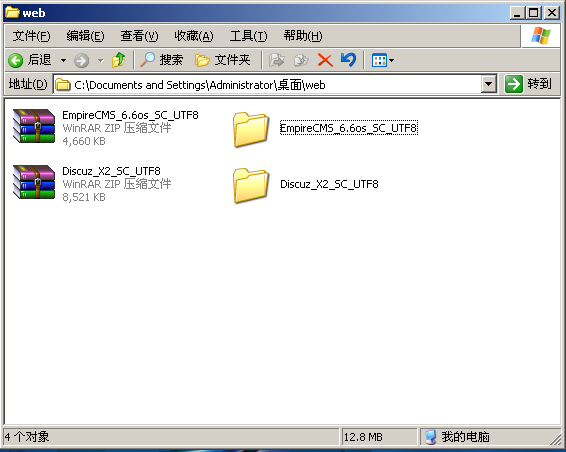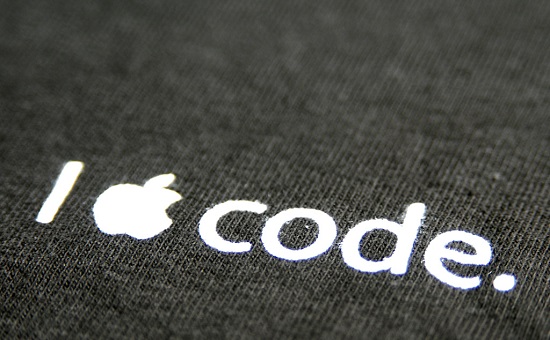TensorFlow在图像识别中的应用
发表于 2015-12-16 16:11 | 次阅读 | 来源 tensorflow.org | 0 条评论 | 作者 TensorFlow
计算机视觉 图形识别 TensorFlow 机器学习
摘要:本教程将会教你如何使用Inception-v3。你将学会如何用Python或者C++把图像分为1000个类别,也会讨论如何从模型中提取高层次的特征,在今后其它视觉任务中可能会用到。本文章重点谈了TensorFlow在图像识别中的应用。
我们大脑的成像过程似乎很容易。人们毫不费力地就能区分出狮子和美洲虎,阅读符号,或是识别面孔。但是这些任务对于计算机而言却是一个大难题:它们之所以看上去简单,是因为我们的大脑有着超乎想象的能力来理解图像。
在过去几年里,机器学习在解决这些难题方面取得了巨大的进步。其中,我们发现一种称为深度 卷积神经网络 的模型在困难的视觉识别任务中取得了理想的效果 —— 达到人类水平,在某些领域甚至超过。
研究员们通过把他们的成果在 ImageNet 进行测试,来展示计算机视觉领域的稳定发展进步,ImageNet是计算机视觉领域的一个标准参照集。一系列的模型不断展现了性能的提升,每次都刷新了业界的最好成绩: QuocNet , AlexNet , Inception(GoogLeNet) , BN-Inception-v2 。谷歌的以及其它的研究员已经发表了论文解释这些模型,但是那些结果仍然很难被重现。我们正在准备发布代码,在最新的模型 Inception-v3 上运行图像识别任务。
Inception-v3 是用来训练2012年 ImageNet 的Large Visual Recognition Challenge数据集。这是计算机视觉领域的一类标准任务,模型要把整个图像集分为 1000个类别 ,例如“斑马”、“达尔玛西亚狗”,和“洗碗机”。如图所示,这里展示了一部分 AlexNet 的分类结果:

为了比较模型,我们检查模型预测前5个分类结果不包含正确类别的失败率 —— 即“top-5 错误率”。在2012年的验证数据集上, AlexNet 取得了15.3%的 top-5 错误率; BN-Inception-v2 的错误率是6.66%; Inception-v3 的错误率是3.46%。
人类在ImageNet挑战赛上的表现如何呢?Andrej Karpathy写了一篇 博文 来测试他自己的表现。他的top-5 错误率是5.1%。
这篇教程将会教你如何使用 Inception-v3 。你将学会如何用Python或者C++把图像分为 1000个类别 。我们也会讨论如何从模型中提取高层次的特征,在今后其它视觉任务中可能会用到。
Python API的使用方法
第一次运行classify_image.py脚本时,它会从tensorflow.org官网上下载训练好的模型。你需要在磁盘上预留约200M的空间。
接下去的步骤默认你已经通过PIP包安装了TensorFlow,并且已经位于TensorFlow的根目录下。
cd tensorflow/models/image/imagenet python classify_image.py
上述命令会对熊猫的图像分类。

如果脚本正确运行, 将会得到如下的输出结果:
giant panda, panda, panda bear, coon bear, Ailuropoda melanoleuca (score = 0.88493) indri, indris, Indri indri, Indri brevicaudatus (score = 0.00878) lesser panda, red panda, panda, bear cat, cat bear, Ailurus fulgens (score = 0.00317) custard apple (score = 0.00149) earthstar (score = 0.00127)
如果你还想测试其它JPEG图片,修改 — image_file参数即可。
如果你把下载的模型放到了另一个目录下,则需要通过修改 — model_dir 参数指定地址。
C++ API的使用方法
你可以在生产环境中用C++运行同样的 Inception-v3 模型。按照下面的方式下载定义模型的GraphDef文件(在TensorFlow的根目录下运行):
wget https://storage.googleapis.com/download.tensorflow.org/models/inception_dec_2015.zip -O tensorflow/examples/label_image/data/inception_dec_2015.zip unzip tensorflow/examples/label_image/data/inception_dec_2015.zip -d tensorflow/examples/label_image/data/
接着,我们需要编译加载和运行模型的C++代码。如果你已经根据自己的平台环境,按照教程下载并安装了TensorFlow,那么在shell终端执行这条命令就能编译例子了:
bazel build tensorflow/examples/label_image/...
这一步生成了二进制可执行程序,然后这样运行:
bazel-bin/tensorflow/examples/label_image/label_image
它使用了框架自带的示例图片,输出的结果大致是这样:
I tensorflow/examples/label_image/main.cc:200] military uniform (866): 0.647296 I tensorflow/examples/label_image/main.cc:200] suit (794): 0.0477196 I tensorflow/examples/label_image/main.cc:200] academic gown (896): 0.0232411 I tensorflow/examples/label_image/main.cc:200] bow tie (817): 0.0157356 I tensorflow/examples/label_image/main.cc:200] bolo tie (940): 0.0145024
这里,我们使用的默认图像是 Admiral Grace Hopper ,网络模型正确地识别出她穿着一套军服,分数高达0.6。

接着,通过修改 —image=argument参数来试一试你自己的图像。
bazel-bin/tensorflow/examples/label_image/label_image --image=my_image.png
如果你进入 tensorflow/examples/label_image/main.cc 文件仔细阅读,就能明白其中的原理。我们希望这段代码能帮助你把TensorFlow融入到你自己的产品中,因此我们一步步来解读主函数:
命令行指定了文件的加载路径,以及输入图像的属性。模型期望输入 299x299 RGB 图片,因此有 input_width 和 input_height两个标志。我们还需要把像素值从0~255的整数值转换为浮点数值。我们通过 input_mean 和 input_std 来控制归一化:首先给每个像素值减去 input_mean,然后除以 input_std。
这些数字可能看起来有些神奇,但它们是模型的原作者根据自己当时的想法定义的数值。如果你有一张自己训练的图片,你只需调整数值以匹配训练过程所使用的值。
你阅读ReadTensorFromImageFile()函数就能够明白它们是如何被应用到一张图片上的。
// Given an image file name, read in the data, try to decode it as an image, // resize it to the requested size, and then scale the values as desired. Status ReadTensorFromImageFile(string file_name, const int input_height, const int input_width, const float input_mean, const float input_std, std::vector<Tensor>* out_tensors) { tensorflow::GraphDefBuilder b; 首先创建一个GraphDefBuilder 对象,我们可以用它来指定运行或加载的模型。
string input_name = "file_reader"; string output_name = "normalized"; tensorflow::Node* file_reader = tensorflow::ops::ReadFile(tensorflow::ops::Const(file_name, b.opts()), b.opts().WithName(input_name));
接着,我们来为希望运行的模型创建节点,用于加载图像、调整大小和归一化像素值,使得其符合模型的输入条件。我们创建的第一个节点只是一个Const操作,一个用来存放我们希望加载图像的文件名的tensor。然后它作为第一个输入传给ReadFile操作。你也许注意到了我们把 b.opts() 作为最后一个参数传给所有的op 创建函数。这个参数确保了节点被添加到GraphDefBuilder定义的模型下。我们也通过 b.opts() 调用 WithName() 函数来给ReadFile操作命名。给节点赋名字并不是严格要求的,因为即使我们不做,节点也会自动被分配一个名字,但这会让debug变得容易些。
// Now try to figure out what kind of file it is and decode it. const int wanted_channels = 3; tensorflow::Node* image_reader; if (tensorflow::StringPiece(file_name).ends_with(".png")) { image_reader = tensorflow::ops::DecodePng( file_reader, b.opts().WithAttr("channels", wanted_channels).WithName("png_reader")); } else { // Assume if it's not a PNG then it must be a JPEG. image_reader = tensorflow::ops::DecodeJpeg( file_reader, b.opts().WithAttr("channels", wanted_channels).WithName("jpeg_reader")); } // Now cast the image data to float so we can do normal math on it. tensorflow::Node* float_caster = tensorflow::ops::Cast( image_reader, tensorflow::DT_FLOAT, b.opts().WithName("float_caster")); // The convention for image ops in TensorFlow is that all images are expected // to be in batches, so that they're four-dimensional arrays with indices of // [batch, height, width, channel]. Because we only have a single image, we // have to add a batch dimension of 1 to the start with ExpandDims(). tensorflow::Node* dims_expander = tensorflow::ops::ExpandDims( float_caster, tensorflow::ops::Const(0, b.opts()), b.opts()); // Bilinearly resize the image to fit the required dimensions. tensorflow::Node* resized = tensorflow::ops::ResizeBilinear( dims_expander, tensorflow::ops::Const({input_height, input_width}, b.opts().WithName("size")), b.opts()); // Subtract the mean and divide by the scale. tensorflow::ops::Div( tensorflow::ops::Sub( resized, tensorflow::ops::Const({input_mean}, b.opts()), b.opts()), tensorflow::ops::Const({input_std}, b.opts()), b.opts().WithName(output_name)); 我们接着添加更多的节点,解码数据文件得到图像内容,将整型的像素值转换为浮点型值,调整图像大小,最后对像素值做减法和除法的归一化运算。
// This runs the GraphDef network definition that we've just constructed, and // returns the results in the output tensor. tensorflow::GraphDef graph; TF_RETURN_IF_ERROR(b.ToGraphDef(&graph));
最终,变量b包含了模型定义的信息,我们用ToGraphDef() 函数将其转换为一个完整的图定义。
std::unique_ptr<tensorflow::Session> session( tensorflow::NewSession(tensorflow::SessionOptions())); TF_RETURN_IF_ERROR(session->Create(graph)); TF_RETURN_IF_ERROR(session->Run({}, {output_name}, {}, out_tensors)); return Status::OK(); 然后,我们再创建一个Session对象,它是真正用来运行图的接口,并且运行它,同时指定我们从哪个节点得到输出结果以及输出数据存放在哪儿。
我们会得到一组 Tensor 对象,在这个例子中一组tensor对象仅有一个成员(只有一张输入图片)。这里你可以把 Tensor 当做是一个多维数组,它以浮点数组的形式存放299像素高、299像素宽、3个通道的图像。如果你现有的产品中已经有了自己的图像处理框架,可以继续使用它,只需要保证在输入图像之前进行同样的预处理步骤。
这是用C++动态创建小型 TensorFlow 图的简单例子,但是对于预训练的Inception模型,我们则需要从文件中加载大得多的定义内容。查看 LoadGraph() 函数我们是如何实现的。
// Reads a model graph definition from disk, and creates a session object you // can use to run it. Status LoadGraph(string graph_file_name, std::unique_ptr<tensorflow::Session>* session) { tensorflow::GraphDef graph_def; Status load_graph_status = ReadBinaryProto(tensorflow::Env::Default(), graph_file_name, &graph_def); if (!load_graph_status.ok()) { return tensorflow::errors::NotFound("Failed to load compute graph at '", graph_file_name, "'"); } 如果你仔细阅读图像加载的代码,会发现很多熟悉的术语。不同于用 GraphDefBuilder 来生产一个 GraphDef 对象,我们直接加载包含 GraphDef 的protobuf文件。
session->reset(tensorflow::NewSession(tensorflow::SessionOptions())); Status session_create_status = (*session)->Create(graph_def); if (!session_create_status.ok()) { return session_create_status; } return Status::OK(); } 我们然后从那个 GraphDef 创建一个 Session 对象,将它传回给调用者以便后续调用执行。
GetTopLabels() 函数和图像加载的过程很像,差别在于这里我们想获取运行完main graph的结果,将其按照得分从高到低排序取前几位的标签。如同 image loader,它创建一个 GraphDefBuilder,往里添加一些节点,然后运行short graph得到一对输出的tensor。本例中是输出有序的得分和得分最高结果的索引号。
// Analyzes the output of the Inception graph to retrieve the highest scores and // their positions in the tensor, which correspond to categories. Status GetTopLabels(const std::vector<Tensor>& outputs, int how_many_labels, Tensor* indices, Tensor* scores) { tensorflow::GraphDefBuilder b; string output_name = "top_k"; tensorflow::ops::TopK(tensorflow::ops::Const(outputs[0], b.opts()), how_many_labels, b.opts().WithName(output_name)); // This runs the GraphDef network definition that we've just constructed, and // returns the results in the output tensors. tensorflow::GraphDef graph; TF_RETURN_IF_ERROR(b.ToGraphDef(&graph)); std::unique_ptr<tensorflow::Session> session( tensorflow::NewSession(tensorflow::SessionOptions())); TF_RETURN_IF_ERROR(session->Create(graph)); // The TopK node returns two outputs, the scores and their original indices, // so we have to append :0 and :1 to specify them both. std::vector<Tensor> out_tensors; TF_RETURN_IF_ERROR(session->Run({}, {output_name + ":0", output_name + ":1"}, {}, &out_tensors)); *scores = out_tensors[0]; *indices = out_tensors[1]; return Status::OK(); PrintTopLabels() 函数接收排序完的结果,然后打印输出到控制台。CheckTopLabel() 函数的功能也非常相似,只是验证顶部的标签符合我们的结果预期,为了调试的时候方便。
最后,main()函数串联所有的调用方法。
int main(int argc, char* argv[]) { // We need to call this to set up global state for TensorFlow. tensorflow::port::InitMain(argv[0], &argc, &argv); Status s = tensorflow::ParseCommandLineFlags(&argc, argv); if (!s.ok()) { LOG(ERROR) << "Error parsing command line flags: " << s.ToString(); return -1; } // First we load and initialize the model. std::unique_ptr<tensorflow::Session> session; string graph_path = tensorflow::io::JoinPath(FLAGS_root_dir, FLAGS_graph); Status load_graph_status = LoadGraph(graph_path, &session); if (!load_graph_status.ok()) { LOG(ERROR) << load_graph_status; return -1; } 加载main graph。
// Get the image from disk as a float array of numbers, resized and normalized // to the specifications the main graph expects. std::vector<Tensor> resized_tensors; string image_path = tensorflow::io::JoinPath(FLAGS_root_dir, FLAGS_image); Status read_tensor_status = ReadTensorFromImageFile( image_path, FLAGS_input_height, FLAGS_input_width, FLAGS_input_mean, FLAGS_input_std, &resized_tensors); if (!read_tensor_status.ok()) { LOG(ERROR) << read_tensor_status; return -1; } const Tensor& resized_tensor = resized_tensors[0]; 加载输入图像,调整大小,完成预处理。
// Actually run the image through the model. std::vector<Tensor> outputs; Status run_status = session->Run({{FLAGS_input_layer, resized_tensor}}, {FLAGS_output_layer}, {}, &outputs); if (!run_status.ok()) { LOG(ERROR) << "Running model failed: " << run_status; return -1; } 我们以图片作为输入,运行加载完的graph。
// This is for automated testing to make sure we get the expected result with // the default settings. We know that label 866 (military uniform) should be // the top label for the Admiral Hopper image. if (FLAGS_self_test) { bool expected_matches; Status check_status = CheckTopLabel(outputs, 866, &expected_matches); if (!check_status.ok()) { LOG(ERROR) << "Running check failed: " << check_status; return -1; } if (!expected_matches) { LOG(ERROR) << "Self-test failed!"; return -1; } } 为了完成测试,我们可以检查输出的结果是否符合预期。
// Do something interesting with the results we've generated. Status print_status = PrintTopLabels(outputs, FLAGS_labels);
最后,打印输出得到的标签。
if (!print_status.ok()) { LOG(ERROR) << "Running print failed: " << print_status; return -1; } 异常处理使用了TensorFlow的Status对象,非常方便,调用ok() 函数就能知道是否出现了任何错误,还可以将错误信息以易读的方式打印出来。
我们在这个例子中演示了物体识别功能,今后无论在什么领域,你都应该学会将类似的代码用于其它模型或者你自己训练的模型。希望这个小例子能带给你一些启发,将TensorFlow用于自己的产品。
练习:迁移学习(transfer learning)的思想是人们若是擅长解决一类任务,那就应该能迁移其中的理解内容,用它来解决另一类相关的问题。实现迁移学习的方法之一就是移除网络的最后一层分类层,并且提取CNN的 倒数第二层 ,在本例中是一个2048维的向量。可以通过C++的API设置 -- output_layer=pool_3 来指定,然后修改输出tensor。尝试在一个图像集里提取这个特征,看看你是否能够预测不属于ImageNet的新类型。
延伸阅读
想要获取更多的神经网络普及资料,Michael Niesen 的 免费电子书 是个极好的资源。针对卷积神经网络,Chris Olah写过一些很赞的 博客 ,Michael Nielsen的书里也有一个 章节 详细介绍。
若是要了解更多卷积神经网络的应用,你可以直接前去阅读TensorFlow的 深度卷积神经网络 章节,或是从 ML beginner 和 ML expert MNIST初学者教程逐渐深入。最后,若果想要追赶此领域的前沿动态,可以阅读本教程所引用的所有文献。
原文链接 : Image Recognition (翻译/赵屹华 审校/刘翔宇 责编/周建丁)
译者简介: 赵屹华 ,计算广告工程师@搜狗,前生物医学工程师,关注推荐算法、机器学习领域。
本文为CSDN编译整理,未经允许不得转载,如需转载请联系market#csdn.net(#换成@)











![[HBLOG]公众号](https://www.liuhaihua.cn/img/qrcode_gzh.jpg)

